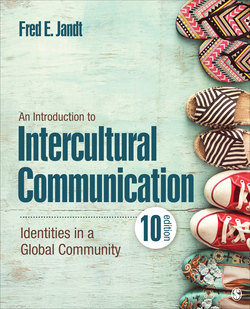Читать книгу An Introduction to Intercultural Communication - Fred E. Jandt - Страница 94
На сайте Литреса книга снята с продажи.
Case Study: White Privilege
ОглавлениеIn the 1930s, W. E. B. Du Bois wrote of White supremacy as a global phenomenon (1935 reissued in 1995). Later, Theodore W. Allen introduced the term White privilege, which later was popularized by Peggy McIntosh (1989). She uses the term to describe how a dominant culture empowers some:
As a white person, I have realized I had been taught about racism as something which puts others at a disadvantage, but had been taught not to see one of its corollary aspects, white privilege, which puts me at an advantage. I think whites are carefully taught not to recognize white privilege, as males are taught not to recognize male privilege. So I have begun in an untutored way to ask what it is like to have white privilege. I have come to see white privilege as an invisible package of unearned assets which I can count on cashing in on each and every day, but about which I was “meant” to remain oblivious. White privilege is like an invisible weightless knapsack of special provisions, maps, passports, code books, visas, clothes, tools and blank checks. (paras. 2–3, https://nationalseedproject.org/white-privilege-unpacking-the-invisible-knapsack)
McIntosh (1994) uses a comparison to being right-handed. Pick up a pair of scissors, grasp a door handle, and sit at a student’s desk. They are all designed for right-handed people. Yet right-handed people do not tend to recognize how the world favors right-handedness. White culture resulted from a synthesis of ideas, values, and beliefs inherited from European ethnic groups in the United States. As the dominant culture in the United States, White culture is the foundation of social norms and organizations.
Are bandages racist? What color are flesh-colored bandages?
moodboard/Thinkstock
White privilege exists in the United States as well as other nations, particularly South Africa (Drzewiecka & Steyn, 2009). Scholars from a variety of disciplines have argued that White people in the United States are observed by other groups to be distinct, superior, and unapproachable, whereas Whites themselves are relatively unaware of their racial identity compared to people of color (Bahk & Jandt, 2003, 2004; Dyer, 1997; Hayman & Levit, 1997; Katz & Ivey, 1977).
People of color are likely to be more aware of a racial identity and associate inferior traits with skin color. Racial categorization is prevalent, especially among people who live in a multiracial society. When given a list of racial categories, most people can identify their own racial group and those of others (Montepare & Opeyo, 2002). This perception of racial disparity can lead to socially constructed stereotypes and prejudice to influence interracial communication.
In one study conducted by Maddox and Gray (2002), participants were presented with photographs of Black discussants and statements made by the discussants. The skin tone (lightness and darkness) of discussants was varied in the photographs. The participants were asked to match each of the statements with the photograph of the discussant who they believed made the statement. The study found that both Black and White participants used race as an organizing principle in their perceptions—participants tended to associate positive traits with light-skinned Blacks and negative traits with dark-skinned Blacks. According to Ronald Jackson, Chang In Shin, and Keith Wilson (2000), through acknowledging the superiority and privilege of Whites in U.S. society, people of color can come to internalize their status as inferior and believe White interaction partners regard them as mediocre, unprivileged, and subordinate. While Whites may expect the privileges of being White, some may feel that they are being targeted as the “evil nemesis” when they do not feel personally responsible for racism (R. L. Jackson & Heckman, 2002).
It’s important to note that both Whites and people of color are participants in this process. All people must challenge negative perceptions of race. Scholars such as McPhail (2002) argue that such perceptions must be engaged openly to remedy the communication patterns between racial groups.
Critics of the concept of White privilege point out that there is a wide diversity of peoples identified as White and argue that the concept ignores differences among White microcultures. Other critics reference intersectionality to explain that we have overlapping social identities of gender, race, and social class, among others, and can be privileged in some ways and not privileged in others.
